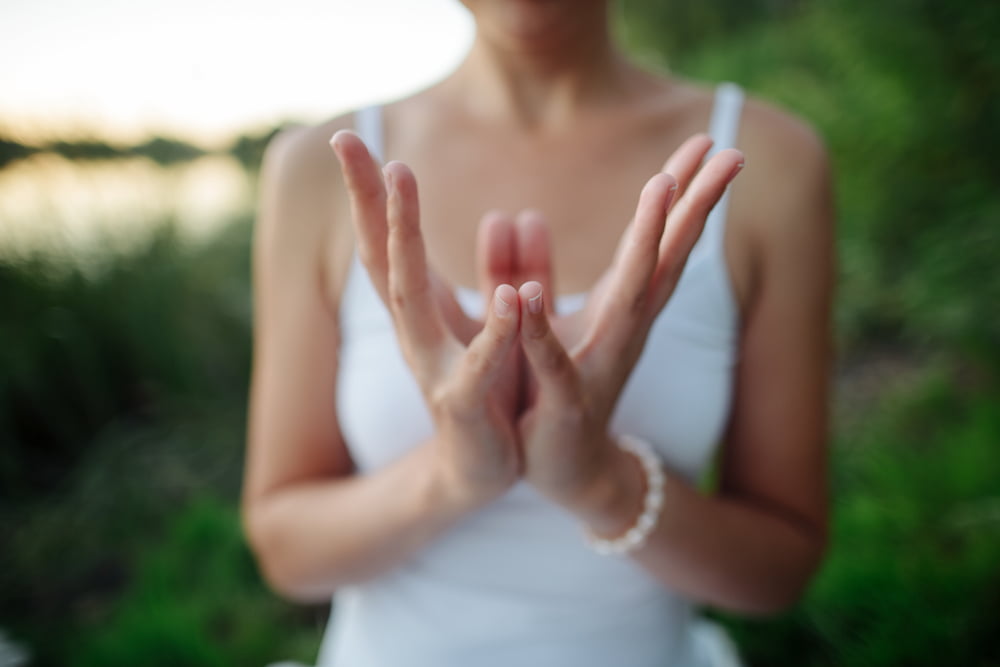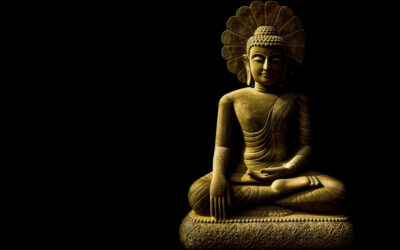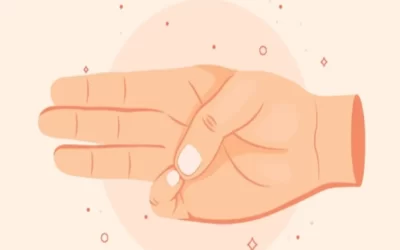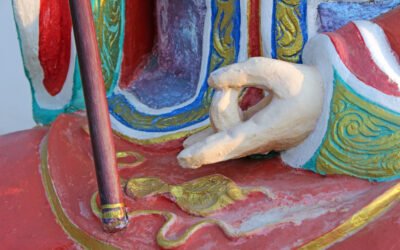The Lotus Mudra which is also known as Padma Mudra, is a symbolic hand gesture commonly practiced in various forms of yoga & meditation. This mudra represents purity, enlightenment & spiritual growth and also believed to enhance these qualities when practiced regularly. The Lotus Mudra holds significant benefits for physical, mental & emotional wellbeing, but it is essential to understand its potential side effects, proper technique and precautions to ensure a safe and effective practice. In this article, we will know about the benefits of Lotus Mudra, explore any potential side effects, provide a step by step guide on how to perform it correctly, and outline necessary precautions for practitioners to follow. Whether you are a beginner or an experienced yogi, understanding the Lotus Mudra can deepen your spiritual practice & contribute to a more balanced and harmonious life.
Benefits on Lotus Mudra.
Here, we explore the following benefits one can experience through the regular practice of the Lotus Mudra:
1. Enhances Connection with Divine Energy.
The Lotus Mudra is associated with the lotus flower, a symbol of purity, enlightenment & spiritual growth.
By assuming this gesture, individuals can establish a deeper connection with divine energy, allowing them to experience a profound sense of peace, tranquillity & spiritual awakening.
2. Balances & Harmonizes the Chakras.
This mudra is particularly effective in balancing & harmonizing the chakras, the energy centers within the body.

By bringing the hands into this position, individuals can stimulate the energy flow, ensuring a healthy and balanced functioning of the chakras. This can lead to enhanced overall wellbeing, both physically and mentally.
3. Cultivates Inner Peace & Calm.
The Lotus Mudra excel the practitioner to adopt a calm & meditative state of mind. By bringing the hands into the shape of a lotus flower, one can invite a sense of serenity & tranquillity into their being.
Regular practice of this mudra can help to alleviate stress, anxiety & restlessness, promoting a peaceful state of mind.
4. Stimulates Concentration & Focus.
The Lotus Mudra requires focused attention & intentional positioning of the hands. As a result, it enhances concentration & helps quieten the mind, allowing individuals to delve deeper into their meditation or yoga practice.
This improved focus can extend beyond the practice itself & positively impact daily tasks and responsibilities.
5. Promotes Spiritual Growth & Enlightenment.
The Lotus Mudra is often associated with spiritual growth & the journey towards enlightenment. Regular practice can help individuals to deepen their spiritual understanding, connect with their higher self & experience a profound sense of inner awakening. It can facilitate the exploration of one’s true nature and purpose in life.
6. Encourages Openness & Receptivity.
The Lotus Mudra is a gesture of openness & receptivity. By assuming this mudra, individuals invite the energy of receptiveness into their lives, allowing them to be more open to new experiences, ideas & perspectives.
It encourages individuals to let go of preconceived notions & embrace the present moment with a sense of curiosity and acceptance.
7. Symbolizes Transformation & Growth.
The lotus flower, from which the mudra draws inspiration, grows from muddy waters but emerges pristine & beautiful.
Similarly, the Lotus Mudra symbolizes transformation & growth. Regular practice of this mudra can inspire individuals to embrace their own personal growth journey, overcome challenges & blossom into their full potential.
| 💡 Tips FreakToFit.com Incorporating the Lotus Mudra into one’s daily yoga or meditation practice can bring forth a multitude of benefits. From deepening spiritual connection to promoting inner peace and growth, this mudra is a powerful tool for those seeking to enhance their overall well-being and embark on a transformative journey of self-discovery. |
Side Effects of Lotus Mudra.
Lotus Mudra is a powerful and ancient hand gesture that holds significant spiritual and healing benefits. It is a gesture commonly used in yoga and meditation practices, where the fingers are interlaced, palms facing up, and the thumbs gently touching. While Lotus Mudra offers numerous positive effects on the mind, body, and spirit, there are a few side effects that individuals should be aware of when practicing this mudra.
1. Increased Energy Flow.
One of the primary side effects of Lotus Mudra is the amplification of energy flow throughout the body. This heightened energy can lead to feelings of restlessness, agitation, or even an overactive mind. It is essential to be mindful of this energy surge and ensure it is directed towards positive endeavours or channelled through further meditation or physical activity.
2. Emotional Release.
As Lotus Mudra stimulates the flow of energy within the body, it may also lead to the release of unprocessed emotions or past traumas. This emotional release can manifest as sudden bursts of sadness, anger, or even euphoria. It is crucial to approach this aspect of Lotus Mudra with gentleness and self-compassion, allowing the emotions to surface and be acknowledged without judgment.
3. Heightened Sensitivity.
With the increased energy flow and emotional release, practitioners may experience heightened sensitivity to their surroundings. This can result in feeling overwhelmed by external stimuli, such as noise, light, or even other people’s energy. It is essential to create a nurturing and peaceful environment to support the process and practice self-care to counterbalance this heightened sensitivity.
4. Physical Discomfort.
While Lotus Mudra is generally safe and gentle to practice, some individuals may experience physical discomfort as a side effect. This can range from mild sensations of tingling, warmth, or heaviness in the hands and fingers to more intense sensations like cramping or stiffness. It is crucial to listen to the body’s signals and adjust the mudra or release it altogether if any discomfort becomes too intense or prolonged.
5. Increased Intuition and Awareness.
As Lotus Mudra activates the energy channels within the body, it can lead to a heightened sense of intuition and expanded awareness. While this is often seen as a positive effect, it can also be overwhelming for some individuals, particularly if they are not accustomed to such heightened states of consciousness. Practitioners may experience vivid dreams, enhanced psychic abilities, or even difficulty distinguishing between their own thoughts and external energies. It is vital to ground oneself through grounding exercises, such as walking barefoot or connecting with nature, to navigate these expanded states of awareness.
| 💡 Tips FreakToFit.com Lotus Mudra offers numerous benefits for the mind, body, and spirit, it is essential to be aware of the potential side effects that may arise during its practice. By approaching these side effects with mindfulness, self-compassion, and proper self-care, practitioners can navigate the transformative journey that Lotus Mudra invites, ultimately experiencing its profound healing and spiritual benefits. |
How To Do Lotus Mudra?
If you are interested in incorporating this powerful mudra into your practice, here is a step by step guide on how to do the Lotus Mudra:
1. Find a Comfortable & Quiet Space.
Begin by finding a peaceful environment where you can sit comfortably, either on a cushion or a chair. Ensure that your spine is straight, and your body is relaxed.
2. Position Your Hands.
Place your hands on your lap, with both palms facing upwards. Allow your fingers to gently touch each other, forming a cup like shape.
3. Bring Your Thumbs Together.
Slowly bring the thumbs of both hands together, allowing them to gently touch each other. This connection symbolizes the opening of the lotus flower, representing enlightenment & spiritual growth.
4. Extend Your Pinky Fingers.
Extend your pinky fingers away from each other, while keeping the rest of your fingers connected. This gesture represents the unfolding petals of the lotus flower, signifying purity & transformation.
5. Relax & Breathe.
Once your hands are in the Lotus Mudra position, take a moment to relax your body & focus on your breath. Close your eyes if it feels comfortable & take deep, slow breaths, allowing yourself to enter a state of tranquility.
6. Visualize The Lotus Flower.
As you continue to breathe deeply, visualize a beautiful lotus flower blooming within your heart center. Imagine its petals opening, radiating pure light & love.
7. Set Your Intention.
While holding the Lotus Mudra, set an intention for your practice. It could be cultivating inner peace, awakening your spiritual potential or any other intention that resonates with you.
8. Meditate & Connect.
Stay in this Mudra for as long as you feel comfortable, allowing yourself to go deeper into meditation and connect with your inner self. Focus on your breath, observe any thoughts or sensations that arise & gently guide your attention back to the present moment.
9. Release and Reflect.
When you are ready to conclude your practice, slowly release the Lotus Mudra by separating your hands & resting them on your lap. Take a few moments to reflect on your experience and express gratitude for this time of mindfulness.
| 💡 Tips FreakToFit.com Remember that the Lotus Mudra is not only a physical gesture but also a symbolic representation of spiritual development. By practicing this mudra regularly, you can enhance your meditation practice, promote inner harmony & cultivate a deeper connection with your higher self. |
Precautions During Lotus Mudra.
1. Flexibility.
Before attempting the Lotus Mudra, it is important to ensure that you have sufficient flexibility in your hips, knees & ankles.
This mudra requires the practitioner to sit in a cross legged position with both feet resting on the opposite thighs. If you have any limitations in these areas, it is advisable to practice other seated postures that are more suitable for your body.
2. Gradual Progression.
Lotus Mudra is an advanced hand gesture & it is crucial to approach it with patience and a gradual progression. Trying to force your body into this posture without adequate preparation can lead to strain or injury.
It is recommended to start with simpler seated postures, such as Half Lotus or Easy Pose and gradually work your way up to the full Lotus Mudra.
3. Warm up Exercises.
Before attempting the Lotus Mudra, it is beneficial to perform warm-up exercises to prepare your body for the posture.
This can include gentle stretches for the hips and knees, as well as a short meditation or breathing practice to calm the mind & relax the body.
4. Alignment.
Proper alignment is essential during the Lotus Mudra to avoid unnecessary stress on the joints & muscles. Ensure that your spine is erect & your shoulders are relaxed.
The crown of your head should be aligned with the base of your spine, creating a straight line. Pay attention to your breath and make any necessary adjustments to maintain a comfortable and aligned position.
5. Injury or Discomfort.
If you experience any pain, discomfort or injury during the practice of Lotus Mudra, it is important to listen to your body & modify or discontinue the posture.
Pushing through pain can lead to further injury or hinder your progress. Seek guidance from a qualified yoga teacher or healthcare professional if needed.
6. Consistency & Patience.
Lotus Mudra requires consistent practice & patience to achieve. It is not a posture that can be mastered overnight.
Be gentle with yourself & avoid comparing your progress to others. Enjoy the journey and trust that with regular practice, your body will gradually adapt & become more comfortable in this gesture.
7. Respect Your Limitations.
Each individual’s body is unique & not everyone may be able to comfortably perform the Lotus Mudra. It is important to respect your own limitations & not push yourself beyond what feels safe and comfortable.
There are numerous other mudras and yoga postures that can provide similar benefits, so explore and find what works best for your body.
| 💡 Tips FreakToFit.com Remember, the Lotus Mudra is not just about the physical posture but also a symbol of spiritual awakening and transformation. Approach it with mindfulness, respect and a deep understanding of your own body’s capabilities. |
My Personal Experience on Lotus Mudra.
Personally, I have found this mudra to be incredibly grounding and calming. By bringing the hands together in front of the heart, with the thumbs & pinky fingers touching, I feel a sense of connection and balance within myself.
The lotus, symbolizing purity and enlightenment, serves as a constant reminder of the potential for growth & transformation.
As I focus on my breath and hold this mudra, I feel a deep sense of peace and tranquility washing over me. It helps me to let go of any external distractions & fully immerse myself in the present moment.
The Lotus Mudra has become an integral part of my meditation practice, allowing me to cultivate a sense of inner peace and clarity.
Frequently Asked Questions.
Yes, anyone can practice the Lotus Mudra. It is a simple hand gesture that can be easily incorporated into meditation or yoga practices. It is suitable for beginners and experienced practitioners alike.
There is no specific time limit for holding the Lotus Mudra. You can hold it for as long as you feel comfortable & relaxed during your meditation or yoga practice. Some people prefer to hold it for a few minutes, while others may hold it for longer periods.
Yes, the Lotus Mudra can be combined with other mudras or hand gestures to enhance the overall meditation or yoga experience. It can be used in conjunction with breath awareness or specific chanting practices.
Yes, the Lotus Mudra can be practiced anytime and anywhere. It can be a simple gesture to bring a sense of calm and focus to your daily activities or as a way to reconnect with yourself during moments of stress or anxiety.
While the basic form of the Lotus Mudra remains the same, there may be slight variations in hand placement or finger interlocking based on different traditions or personal preferences. It is best to find a comfortable position that suits you.
Bottom Line.
The Lotus Mudra is a powerful and symbolic hand gesture that has been used for centuries in various spiritual practices. Its resemblance to a blooming lotus flower represents purity, enlightenment and transformation. By practicing this mudra, individuals can cultivate a sense of inner peace, balance and harmony. Additionally, the Lotus Mudra can help to connect with one’s higher self & tap into the divine energy within. Whether used in meditation, yoga or everyday life, incorporating the Lotus Mudra into our practice can bring about profound spiritual and personal growth.

 Workout
Workout
 Meditation
Meditation


 Stories
Stories


 Podcast
Podcast E-book
E-book
















